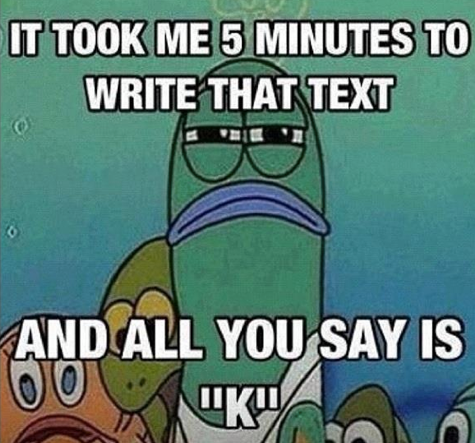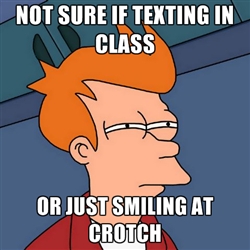Litextracy?
In the current digital age, texting and literacy come together to form a paradoxical relationship. While our youth are reading and writing more than ever, their various forms of electronic communication are generally disregarded as “not real writing.” We have to understand that language is constantly changing, and texting has become the written lingua franca of our youth today. In “Instant Messaging and the Future of Language,” Baron argues that linguistic and behaviour innovation often begins with adolescents (30). Real writing or not, it is an inevitable change that is accompanied by changes in educational, cultural, and social attitudes and values.
Wts wrng w/ txtin’?
There is no doubt that texting is often perceived as a corruption of language and the root cause for our youth’s degrading literacy skills. Teachers notice texting language slowly creeping into formal writing assignments. Not only does texting affect student work, it also affects student performance and work ethics in class because of the distraction.
However, pushing those thoughts aside…
AFAIC, txtin cn b a gr8 thng
We have to reconsider what literacy means. As Carrington states in “Txting: the end of civilization (again)?”, we must understand literacy today to “extend beyond the ability to encode and decode print” (172). Literacy is the ability to decode information in various formats, make meaning from it, and encode it into ideas to be communicated to others. The language of text is a register in its own right, and it is not exactly dictated by Standard English grammar and spelling rules. In the wake of constant and rapid technological advancements throughout the past century, what we are witnessing is an evolution of language. In fact, I see potential in texting for literacy development.
We as teachers should understand that because texting is a mode of communication most common to high school students today, it would be almost ridiculous to disregard and ban the cellphone. While this new technology brings on new challenges for teaching and learning, new opportunities exist as well. The most crucial thing to do is to “make certain [our students] understand the difference between creativity and normative language use” (Baron 31). We have the responsibility to hold discussions with our students on the importance of knowing our audience and how that affects the language we use when we communicate in different contexts.
L8R,
Christina (blog post #2)
Baron, N.S. (2005). Instant messaging and the future of language. Communications of the ACM, 46(7), 30-31.
Carrington, V. (2005). Txting: the end of civilization (again)? Cambridge Journal of Education, 35(2), 161-175.


